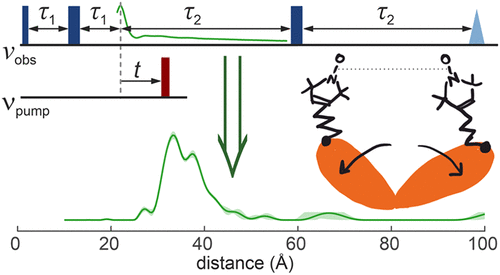The article with participation of prof. E. G. Bagryanskaya (Head of Institute) is published in
The Journal of the American Chemical Society (JACS) (IF 15,419):
Benchmark Test and Guidelines for DEER/PELDOR Experiments on Nitroxide-Labeled Biomolecules
Distance distribution information obtained by pulsed dipolar EPR spectroscopy provides an important contribution to many studies in structural biology. Increasingly, such information is used in integrative structural modeling, where it delivers unique restraints on the width of conformational ensembles. In order to ensure reliability of the structural models and of biological conclusions, we herein define quality standards for sample preparation and characterization, for measurements of distributed dipole–dipole couplings between paramagnetic labels, for conversion of the primary time-domain data into distance distributions, for interpreting these distributions, and for reporting results. These guidelines are substantiated by a multi-laboratory benchmark study and by analysis of data sets with known distance distribution ground truth. The study and the guidelines focus on proteins labeled with nitroxides and on double electron–electron resonance (DEER aka PELDOR) measurements and provide suggestions on how to proceed analogously in other cases.

Abstract
Thermally resistant air-stable organic triradicals with a quartet ground state and a large energy gap between spin states are still unique compounds. In this work, we succeeded to design and prepare the first highly stable triradical, consisting of oxoverdazyl and nitronyl nitroxide radical fragments, with a quartet ground state. The triradical and its diradical precursor were synthesized via a palladium-catalyzed cross-coupling reaction of diiodoverdazyl with nitronyl nitroxide-2-ide gold(I) complex. Both paramagnetic compounds were fully characterized by single-crystal X-ray diffraction analysis, superconducting quantum interference device magnetometry, EPR spectroscopy in various matrices, and cyclic voltammetry. In the diradical, the verdazyl and nitronyl nitroxide centers demonstrated full reversibility of redox process, while for the triradical, the electrochemical reduction and oxidation proceed at practically the same redox potentials, but become quasi-reversible. A series of high-level CASSCF/NEVPT2 calculations was performed to predict inter- and intramolecular exchange interactions in crystals of di- and triradicals and to establish their magnetic motifs. Based on the predicted magnetic motifs, the temperature dependences of the magnetic susceptibility were analyzed, and the singlet–triplet (135 ± 10 cm–1) and doublet-quartet (17 ± 2 and 152 ± 19 cm–1) splitting was found to be moderate. Unique high stability of synthesized verdazyl-nitronylnitroxide triradical opens new perspectives for further functionalization and design of high-spin systems with four or more spins.
Альметрики:


